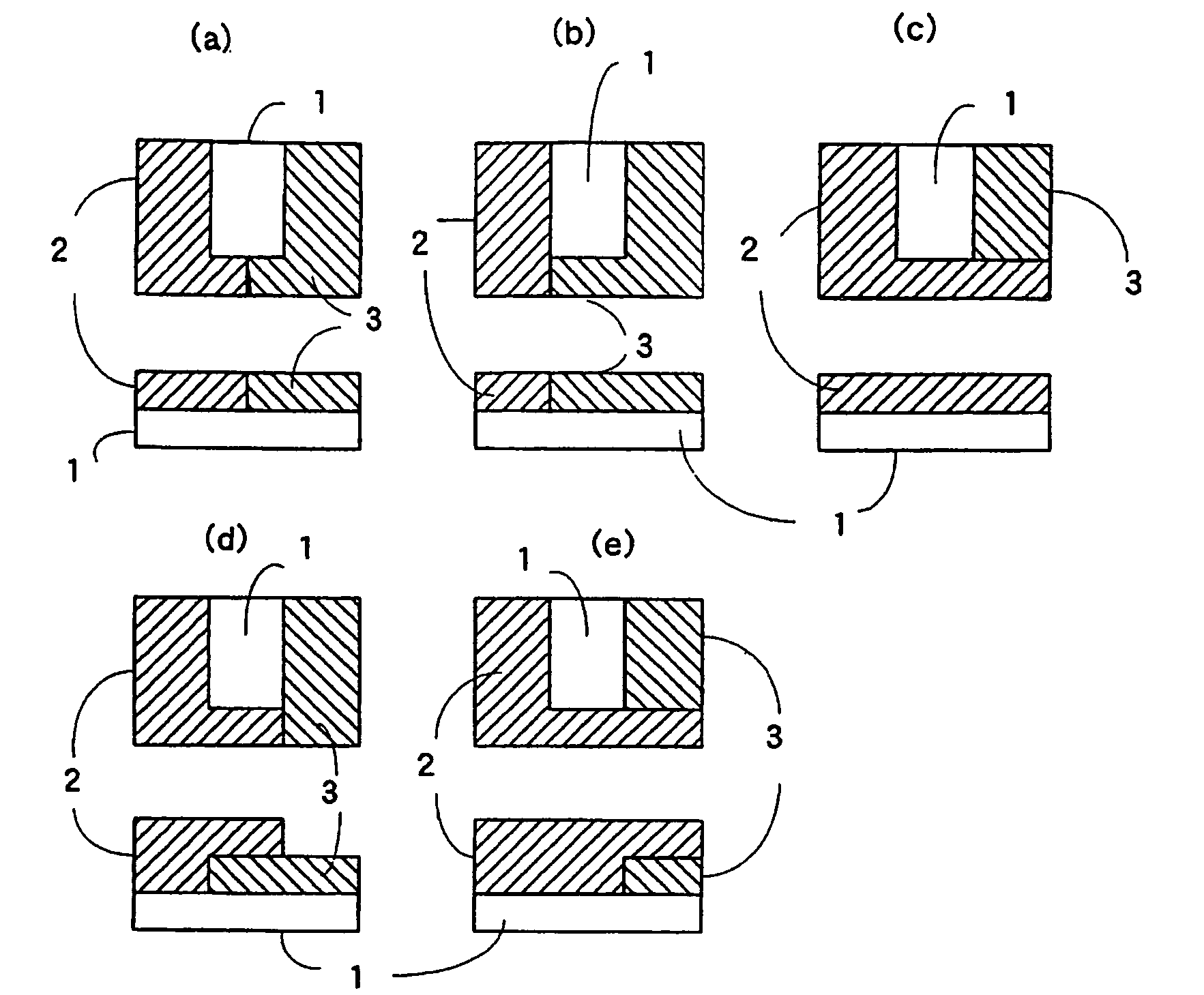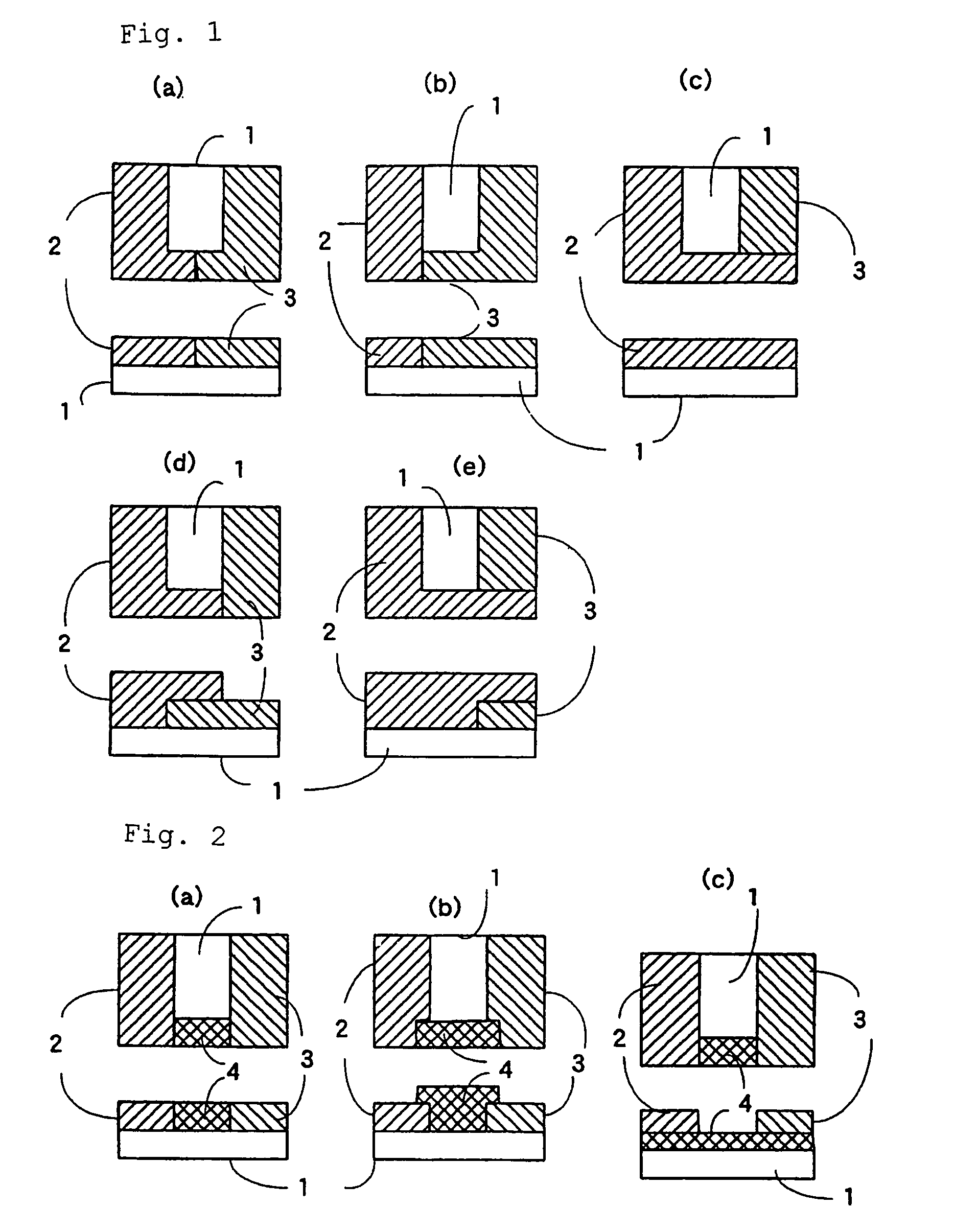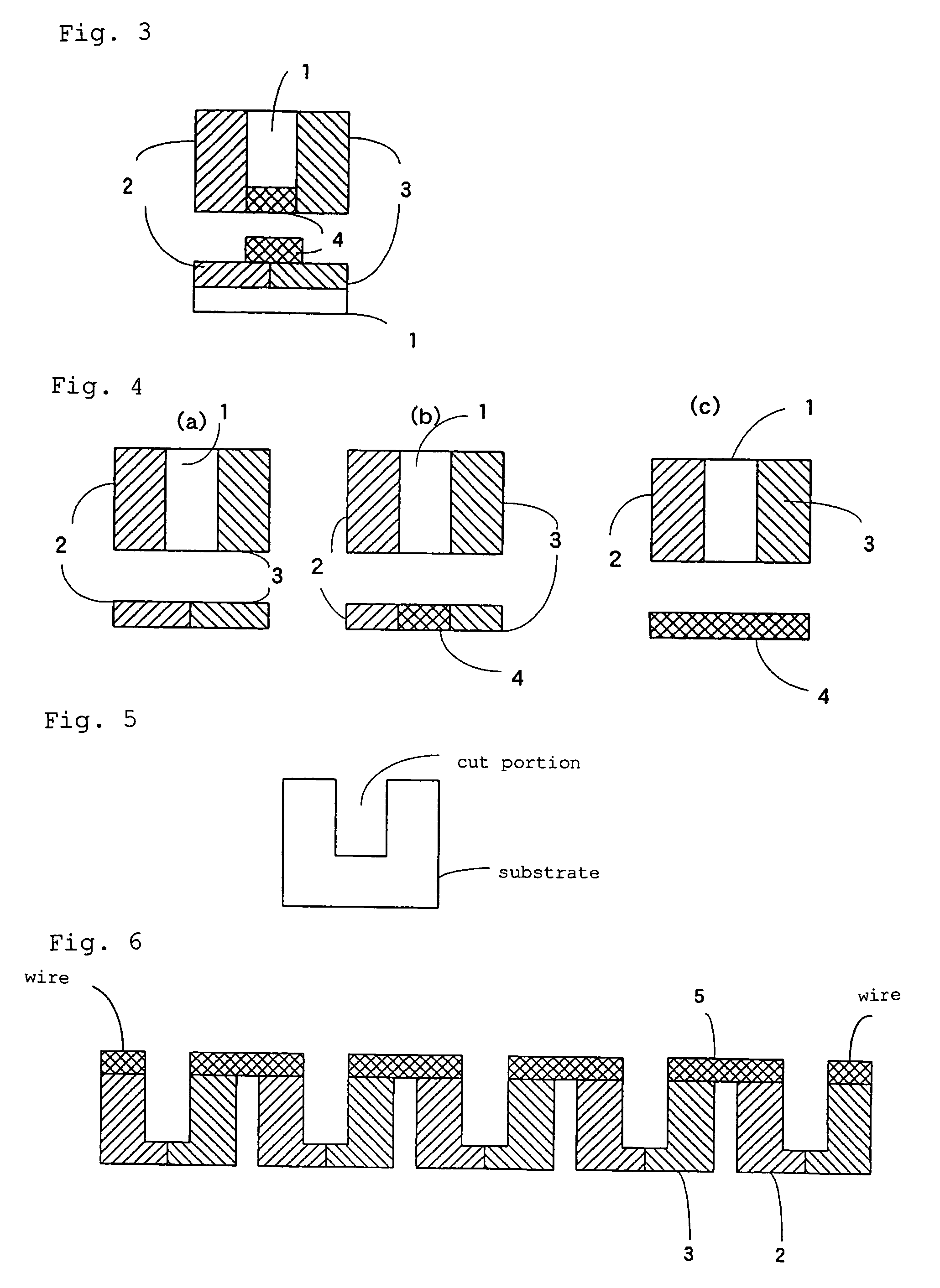Thermoelectric conversion element and thermoelectric conversion module
a technology of thermoelectric modules and thermoelectric elements, which is applied in the direction of thermoelectric device junction materials, thermoelectric material coating processes, electrical apparatus, etc., can solve the problems of wasting a vast amount of thermal energy, and the development of a thermoelectric module (electric power generator) that is needed to realize efficient thermoelectric generation using thermoelectric materials has been delayed so far. , to achieve the effect of good electrical conductivity and high thermoelectric conversion efficiency
- Summary
- Abstract
- Description
- Claims
- Application Information
AI Technical Summary
Benefits of technology
Problems solved by technology
Method used
Image
Examples
example 1
[0147]After a target material (sintered body) for use in pulsed laser deposition was produced according to the following method, a thermoelectric element was produced by pulsed laser deposition.
(1) Preparation of a Target Material
(i) Target Material for Producing a p-type Thermoelectric Material
[0148]Using bismuth oxide (Bi2O3), strontium carbonate (SrCO3) and cobalt oxide (Co3O4) as a raw material, these materials were mixed in such a manner as to yield the atomic ratio of Bi:Sr:Co of 2:2:2. The mixture was calcined at 800° C. in air for 10 hours using an electric furnace, molded under pressure and heated at 850° C. for 20 hours, giving a target material for producing a p-type thermoelectric material in the form of a disk-like sintered body with a diameter of 2 cm and a thickness of 3 mm.
(ii) Target Material for Producing an n-type Thermoelectric Material
[0149]Using lanthanum nitrate (La2(NO3)3.6H2O) as a source of La, bismuth nitrate (Bi(NO3)3.6H2O) as a source of Bi, and nickel n...
examples 2 to 8
[0160]The same procedure as in Example 1 was performed except that a thin film of p-type thermoelectric material and a thin film of n-type thermoelectric material with the compositions shown in Table 1 were formed, producing thermoelectric elements of Examples 2 to 8. In Tables 1 to 3, the value of e is in the range of 8 to 10, k is in the range of 8 to 10, r is in the range of 2.7 to 3.3, w is in the range of 3.6 to 4.4 and r′ is in the range of 2.8 to 3.2.
examples 9 to 16
[0161]Thermoelectric materials with the compositions as shown in Table 1 are used. A thin film of platinum with a length of 8 mm and a thickness of 0.5 μm was formed by sputtering on a portion having 1 mm width from one side of the 8 mm×8 mm surface of an 8 mm×8 mm×1 mm quartz glass plate as a substrate. The platinum thin film was formed at room temperature in vacuo using argon as a sputtering gas.
[0162]Next, a thin film of p-type thermoelectric material with a length of 8 mm was deposited on a portion having 3 mm width from one side perpendicular to the band-like platinum thin film formed, and a thin film of n-type thermoelectric material was further deposited on a portion having 3 mm width from the side opposite to the portion where the thin film of p-type thermoelectric material was deposited. Each thin film was deposited by pulsed laser deposition under the same conditions as in Example 1. Subsequently, a heat treatment was performed under the same conditions as in Example 1, pr...
PUM
| Property | Measurement | Unit |
|---|---|---|
| temperature | aaaaa | aaaaa |
| thermoelectric | aaaaa | aaaaa |
| n-type thermoelectric | aaaaa | aaaaa |
Abstract
Description
Claims
Application Information
 Login to View More
Login to View More - R&D
- Intellectual Property
- Life Sciences
- Materials
- Tech Scout
- Unparalleled Data Quality
- Higher Quality Content
- 60% Fewer Hallucinations
Browse by: Latest US Patents, China's latest patents, Technical Efficacy Thesaurus, Application Domain, Technology Topic, Popular Technical Reports.
© 2025 PatSnap. All rights reserved.Legal|Privacy policy|Modern Slavery Act Transparency Statement|Sitemap|About US| Contact US: help@patsnap.com



